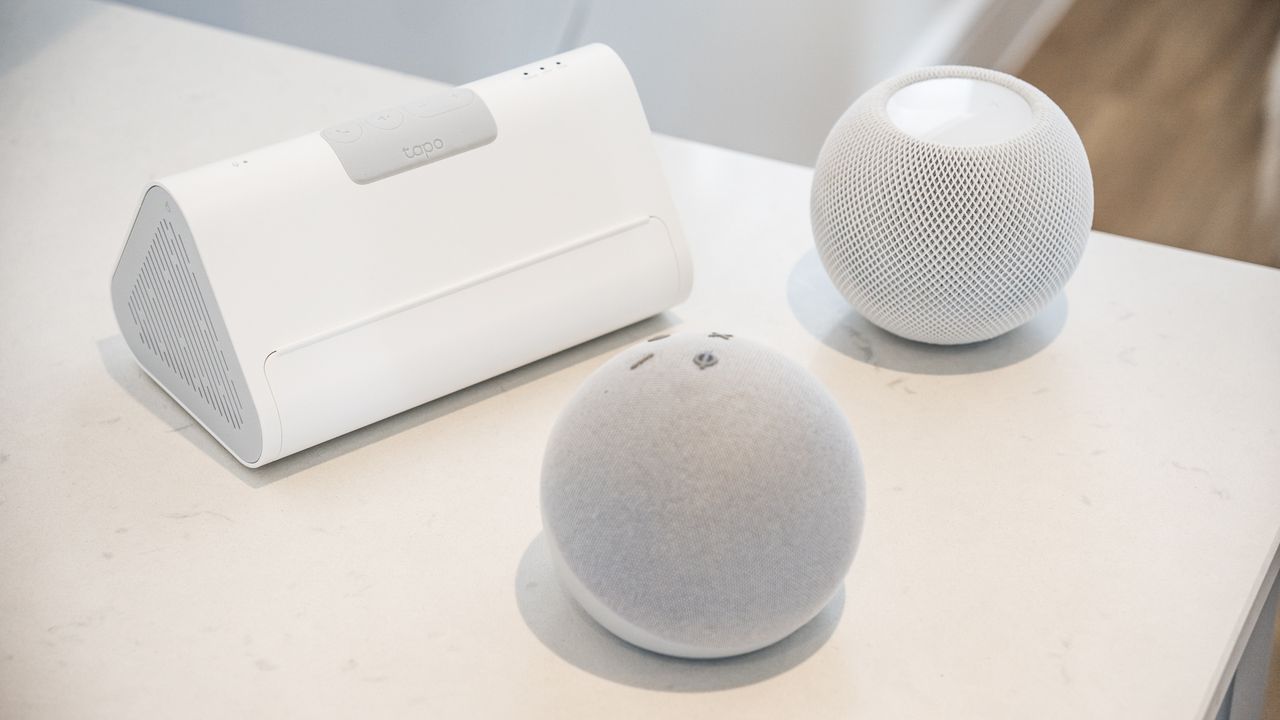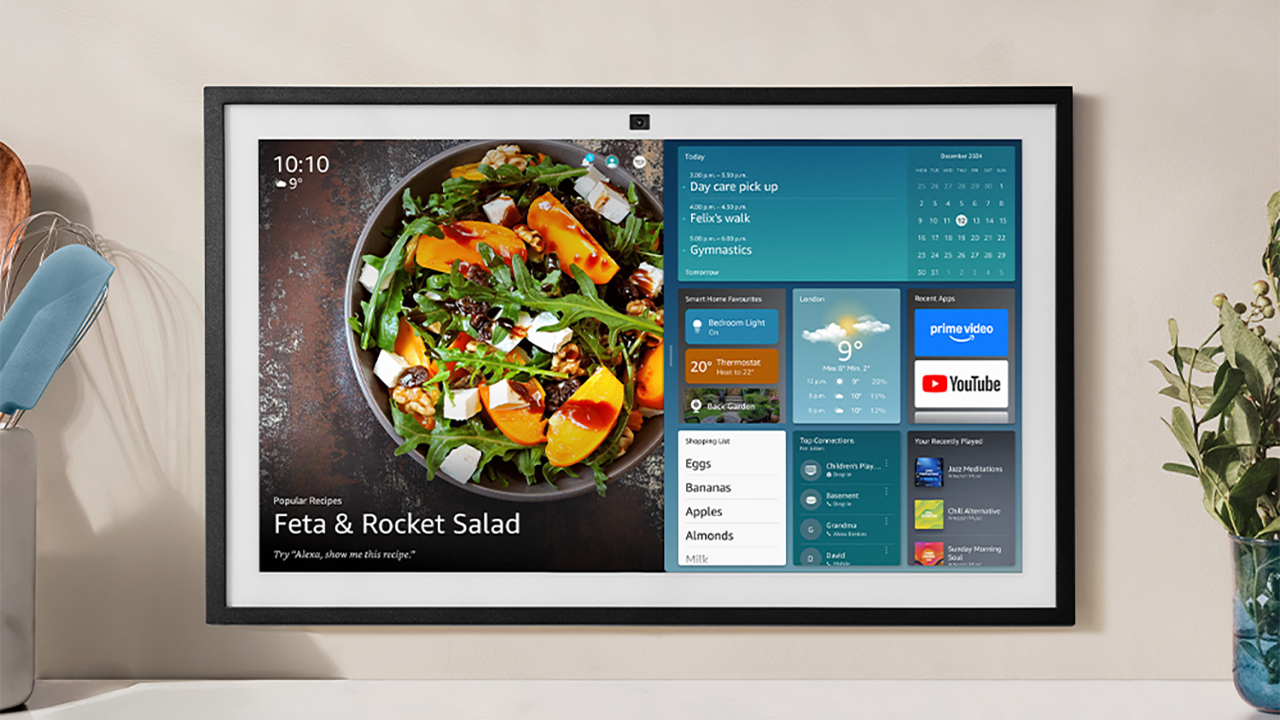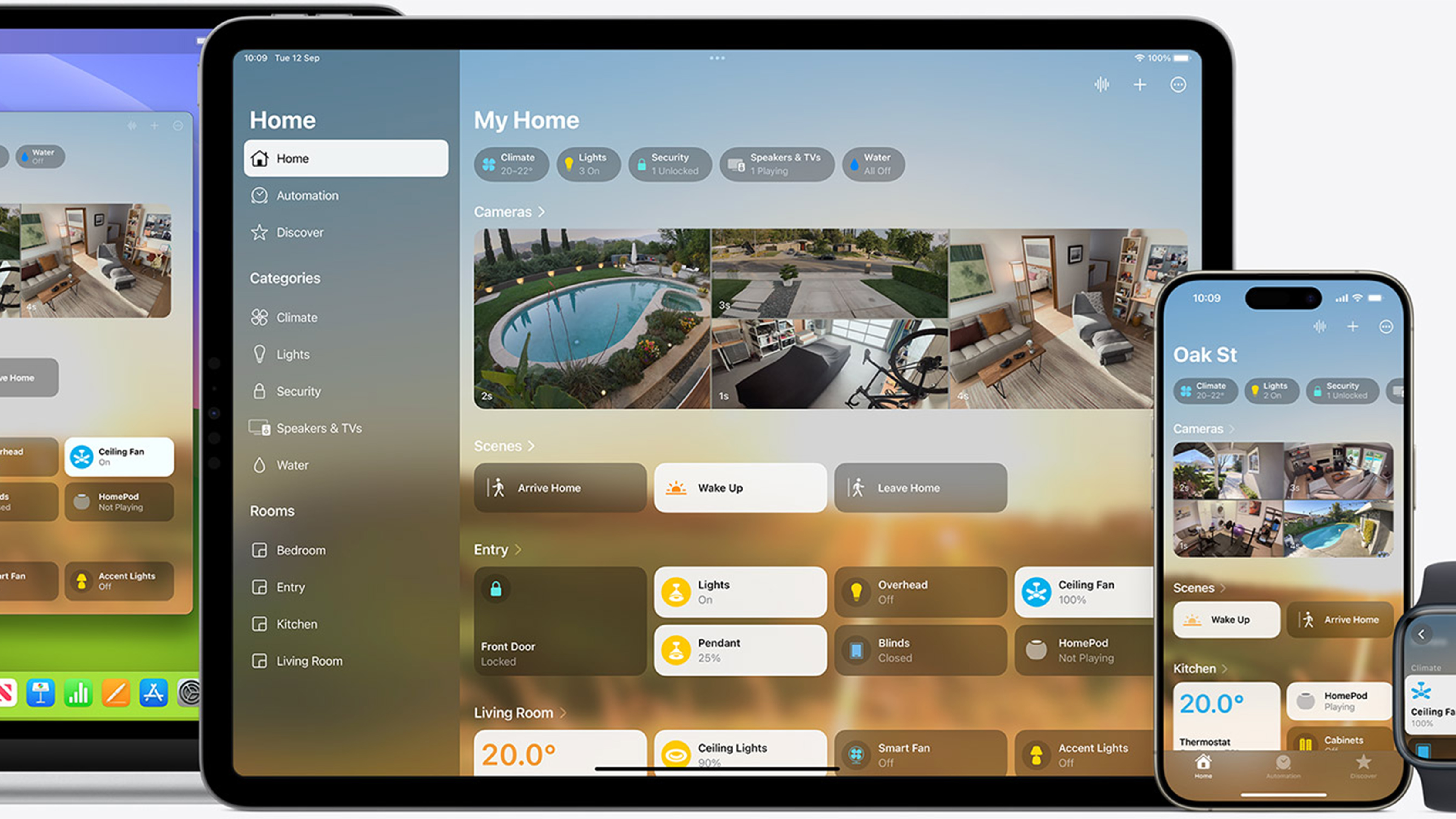
Many smart home devices – from lights and plugs to sensors, cameras, locks and thermostats – work via their own apps. But if you want to control them all from one place, or create automations that involve different products from multiple brands, you need a hub.
Some of the best smart speakers and displays – like Amazon’s Echo range – can act as hubs, but dedicated smart home hubs focus entirely on device control. They often support more standards, work more quickly, and don’t lean more favourably towards one platform or content provider over another.
Instead, in this article I'm talking about dedicated smart home hubs. These tend not to have screens, and they don’t pride themselves on their audio abilities. Instead, they use platforms like Matter and Thread – as well as other wireless technologies – to connect to as many smart home devices as possible.
Smart home hubs have been around for years, but they have often represented the more involved (and, some might say, challenging) end of the smart home ecosystem. They have generally appealed to fans who enjoy tinkering with automation systems to get the most out of their home, rather than those who prefer a plug-and-play approach.
But that is starting to change. For example, TP-Link Tapo now has the Matter-equipped H500, while IKEA’s Dirigera hub now supports Matter to unlock integration between products from multiple brands, and even Apple is rumoured to be working on a hub that blends an iPad with a HomePod.
What is a smart home hub for and why do I need one?

Smart speakers like the Amazon Echo, Apple HomePod and Nest Audio do a decent job of connecting to smart home devices from other companies. But they’re far from perfect. Apple’s HomeKit platform doesn’t work with as many devices as Amazon’s Alexa – and anyone who has grappled with the retail giant’s smart home system recently will know how convoluted and disorganised it has become.
The key word here is interoperability. This is when smart home devices from different companies, using different forms of wireless connectivity, all work together as one. It’s the sort of thing that should have happened on day one – like how all Wi-Fi products can connect to a Wi-Fi router, or how all Bluetooth headphones use the same basic technology. But instead, smart home device makers set off down different paths, some using Bluetooth, while others opted for new forms of wireless tech like Zigbee and Z-Wave.
This is where a dedicated home hub can help, since they are compatible with multiple wireless technologies, and platforms like Matter, which aims to help every smart home product speak the same language.
Options include the Samsung SmartThings Hub, which works with most wireless smart home networks, including Zigbee, Thread and Matter. So too does the Aqara Hub M3, which is compatible with Apple HomeKit and the Siri Shortcuts system.
Since these hubs aren’t trying to also work as a speaker or display, they are generally better-suited to the job of running a smart home than the Echo, Nest and HomePod product lines. They also provide a centralised place for controlling everything, instead of you needing to open up a different app to control your lights, cameras, switches, plugs and thermostat. And they aren’t associated with other services, like how Echo products work best with Amazon’s streaming platforms, and Apple’s HomePod is at its most impressive when working only with other Apple products and services.
Another option comes from Ikea, whose Dirigera hub was updated in 2024 to work with the Matter standard. It previously only worked with Ikea smart products that used Zigbee wireless technology, but last September it gained Matter support, enabling it to work with many more smart home devices. The Swedish furniture giant said at the time how it has “always believed that the smart home should be simple and accessible for everyone,” adding: “Users no longer need to worry about compatibility – everything will just work together, easily and efficiently.”
More recently, TP-Link’s Tapo sub-brand announced the H500 Smart HomeBase. This acts as a hub and storage centre for Tapo’s own security cameras and systems, but also communicates with smart home products from other companies, thanks to Matter. There’s 16GB of encrypted storage for security camera recordings, plus the option to expand with your own HDD or SSD drives, an alarm siren for protecting your home, a microphone for communicating with compatible video doorbells, and an HDMI output for streaming security camera footage to a television or tablet.
Rest a tablet on the hub, and you have a smart home command centre, complete with live video feeds with AI-powered facial recognition, and an app for controlling smart lighting, plugs, cleaning robots and more. It’s a clever system, on paper at least, and I look forward to reviewing it soon.
Is Apple making a smart home hub?

If the rumours are to be believed, then yes, Apple is working on some form of smart home hub. Although nothing has been said officially at this stage, the company is believed to be developing a product that blends a HomePod smart speaker with an iPad, to create a rival to Amazon’s Echo Show range of smart displays.
Tipped to arrive later in 2025 or early 2026, the device is expected to make it easier to create a HomeKit system, which currently requires either a HomePod speaker or Apple TV streaming box to act as a hub. Although it’s unlikely that Apple will start producing its own security cameras, contact sensors and alarm systems, the new product would be expected to communicate with all HomeKit-compatible devices from other manufacturers.
Until that arrives, Apple already has the HomeKit platform and Home app for controlling a range of compatible smart home products, from cameras and door locks, to air conditioning units, lights, switches, sprinklers and more.







